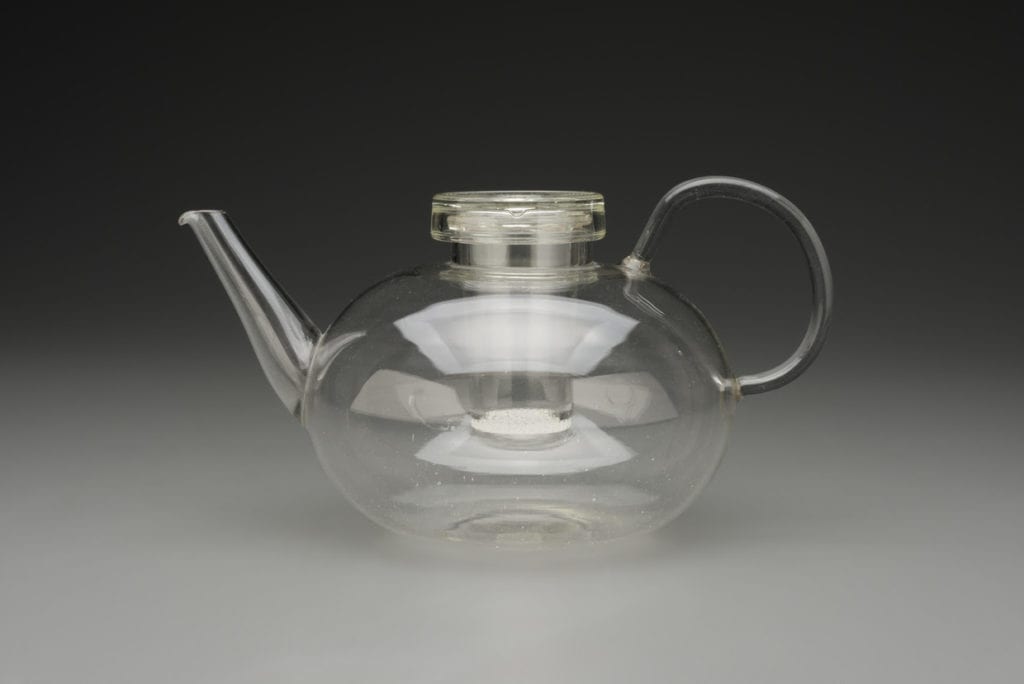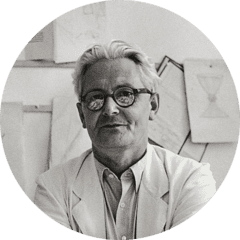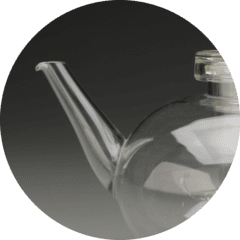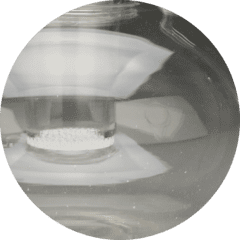Teapot

ABOUT THE ARTWORK
Who made it?

Wilhelm Wagenfeld was a German industrial designer, writer, and educator. A Bauhaus-trained artist, Wagenfeld became one of the most influential designers of the twentieth century, due to the broad reach of his professional endeavors. He designed a large and diverse range of objects from housewares to industrial products made from glass, metal, and plastics. He also led the way for the practice of integrating industrial design into the manufacture of consumer goods. Wagenfeld believed that everyday household objects should be “cheap enough for the worker and good enough for the rich.”
What’s going on in this work?

In 1931 Wagenfeld was hired by Schott & Genossen glassworks in Jena, Germany which produced laboratory glass products as well as home goods. He was commissioned to design heat-resistant glass products. This teapot was his first design for the company and was available as part of a set which included cups and saucers (the Museum has a cup and saucer pair in the collection which you can see here), a cream pitcher, sugar bowl, and a tray. The teapot was also available in three different sizes, all with the central diffuser to strain the tea leavesThe teapot is short and spherical, akin to a bubble. It has a tapered, slightly curved spout, and a delicate looping handle. Extending down into the body of the vessel is a cylindrical strainer, on top of which rests a flat circular lid. The teapot fully celebrates the transparency of the glass it’s made from and highlights the function of a teapot by placing the brewing process front and center.
When the set was first designed, Wagenfeld did not want his name associated with it in order that the focus be entirely on the product. This decision allowed the clean, modern design to shine and placed equal emphasis on those who were part of the manufacturing process with the designer. Wagenfeld stated, “this is perhaps the main difference between handcraft and industry. The former is still bound to the individual…whereas the industrial product is the expression of collective work and collective execution. Only through the joint efforts of designer, technician, and craftsman does the [industrial] product arrive at its final form.”This teapot design has had enduring popularity and is still in production today.
Take a closer look.

Click on the full image of Teapot above to see a larger version of the vessel. Look closely at the object and use these questions to guide your looking. Share your thoughts with your family, a friend virtually, or with us by responding to this email.
- Looking at Teapot, what do you think it would feel like to hold? What do you see that makes you say that? Do you think it would feel different if there were liquid inside? Why or why not?
- Wagenfeld’s art and design work emphasized that everyday objects can be simple, beautiful, and still function extremely well. Explore your home or workspace to find items that you use every day. Spend time looking at them more closely. How does their design support their function and vice versa? Upon closer
To receive the collection in your inbox, join the Raclin Murphy Museum’s mailing list.

Engage with the Raclin Murphy Museum of Art by exploring their collection through background information and reflection questions. For more information on the collections, please visit the Raclin Murphy Museum of Art website.
Learn MoreJune 29, 2020

